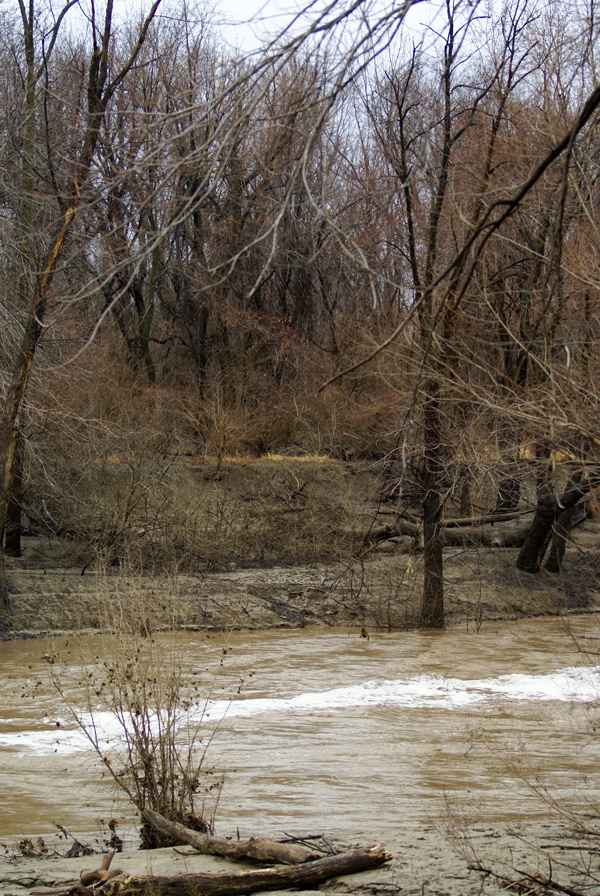At Wood River across from the mouth of the Missouri, River Dubois fills with mud, and the rising water takes away an Indian’s canoe. Sgt. Ordway returns to camp.
Cahokia Creek in Flood
Photo provided by Lewis & Clark State Historic Site, Hartford, Illinois. Used by permission.
The scene above is an approximation of what Clark described on 7 February 1804. The Cahokia Creek Diversion Channel flows past today’s reconstruction of Camp River Dubois. The actual camp was near the confluence of the Missouri and Wood rivers. All these channels have since moved considerably. See The Mouth of the Missouri.
Rising “River a Dubois”
The Creek or River a Dubois rasin fast, Swept off a Canoo belonging to a Maumies Indian from out its mouth. if the present fresh continus a fiew days, the water passing down this Small river [the Dubois] will Wash off all that immence quantity of mud which has filled up its mouth for 300 yards by the Missouris ooze or mud
—William Clark
Sgt. Ordway Returns
Sergt. Odway [Ordway] returned from Kohokia
—William Clark
Weather Diary
Therm at rise
weather wind Therm at 4 Oclk weather wind River 29 above 0 rain after clouds S.E. 30 above 0 rain & cloudy S.E. fall 2 ft. 8 in. a small quantity of soft ice runing, Swans passing
—Meriwether Lewis[1]To assist the reader, the editor of this web page has omitted the “day of month 1804” column, merged the “River” columns, and spelled out some abbreviations.
Experience the Lewis and Clark Trail
The Lewis and Clark Trail Experience—our sister site at lewisandclark.travel—connects the world to people and places on the Lewis and Clark Trail.
Plan a trip related to February 7, 1804:

Winter Camp at Wood River (Camp Dubois) is a High Potential Historic Site along the Lewis and Clark National Historic Trail managed by the U.S. National Park Service. The site, near Hartford, Illinois, is managed as Lewis and Clark State Historic Site and is open to the public.
Old Cahokia Courthouse is a High Potential Historic Site along the Lewis and Clark National Historic Trail managed by the U.S. National Park Service. The site is managed by the State of Illinois and is open to the public.
Notes
| ↑1 | To assist the reader, the editor of this web page has omitted the “day of month 1804” column, merged the “River” columns, and spelled out some abbreviations. |
|---|



